|
|||||||||||
|
|
|||||||||||
|
CASE 1 SEEN IN 2002 - A HAMSTER WITH A CHEST ABSCESS/TUMOUR Written in Dec 21, 2002 Updated: Sep 2, 2008 "The vet asked me to leave my hamster at the surgery. When I went home, he phoned and said it 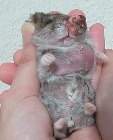 had died during surgery."
Mrs Chin recalled her previous experience with a
veterinarian. With a hamster death, she would not
return to the same veterinarian. This seems to be
a common practice of clients. had died during surgery."
Mrs Chin recalled her previous experience with a
veterinarian. With a hamster death, she would not
return to the same veterinarian. This seems to be
a common practice of clients. I had suggested the same procedure to her to leave the hamster for surgery of a large skin swelling of over 2 cm in diameter. A miniature ping-pong ball dropped down the lower part of the neck. This pinkish red swelling with no hair at its base had grown tremendously over the last two weeks stretching the skin to the limit. The soft swelling was four times the head of the hamster and would likely be a tumour or abscess. Mrs Chin sad as a matter of fact, "My hamster can't close his eyes anymore. He must be sleeping with the eyes open." This hamster had big prominent protruding eyeballs you could not fail to miss. This poor hamster was lifted up by the sheer size of this swelling as he walked about the wood shavings. I advised surgery as there was no other option to treat this case. It could be a blood-type of tumour. But it was most likely an abscess which was a large collection of yellow dirty pus. The body immune system could not cope with the infectious bacteria and the pus kept being produced daily. "Your hamster is in a poor condition, being skinny and dehydrated. He may die on the operating table under anaesthesia" I explained. Hamsters are usually operated on the spot, without the means to check their health status by taking body temperature and doing a blood test as in human or dog medicine. I was not keen on being the second vet whom Mrs Chin who kept several hamsters, would say to her friends that her hamster had died on the operating table under Dr Sing. It was a no win situation. If I did not operate, the hamster would die painfully as he could not eat or drink from the plate since the globular swelling in his chest was much bigger than his head size. This mass elevated him from the plate level. He was not taught to drink from the bottle nipple. If I operated, the poor conditioned hamster has a 70% chance of dying which was not a good gamble on my reputation. So why not let the hamster live the last few weeks of its natural life? But, would this two-and-a-half years old hamster survive longer since he had become emaciated and distressed? He was very uncomfortable and in pain daily. Being unable to close his eyes even for a second. I pressed his upper and lower eye lids together and they would not close as the eyeballs were popping out. That gave the impression he has such beautiful big black eyes. He was suffering. Mrs Chin ruled out any possibility of euthanasia to prevent further pain. A humane solution. The friction on the wood shavings had rubbed off the hair on the base of this swelling making it as shiny as an older man's balding head. This dwarf hamster looked young but he had lost weight as he had a tumour on his left nose too, completely obstructing his left nostril. He could breathe only through the right nostril. He would have problem breathing normally. Given the anaesthetic gas and would die of respiratory failure. I would not even want to operate on a hamster with such disadvantages. All owners and veterinarians want a live hamster after anaesthesia and surgery. The veterinarian with a dead hamster on the operating table would not be given a second chance to perform surgery on another hamster of Mrs Chin. The pale pink tumour with dark red bleeding spots at one end of his nose had enlarged and elongated to around 1 cm in length. At first sight, I thought this was a new breed of dwarf hamster. A piggy hamster because his nose was elongated and looked like a pig snout. "I can't decide now," Mrs Chin said. "The risk of him dying is so great." This was one instance I felt so relieved that I did not need to do surgery as Mrs Chin went home with a hamster she loved a lot. Two days later, Mrs Chin decided on the operation at eight o'clock on a Saturday morning. The hamster had eaten overnight but had great difficulty in swallowing. I could not say no. Mr Chin, a serious looking and thin man said, "Doc, please stitch up the operated area of my hamster even if he died during operation." He must have great love for this little creature. This was a tricky anaesthetic case as the hamster could only breathe in through one normal nostril. A risky one. How long should he be under the anaesthetic gas? |
Should I give him one minute of gas or should it
be double the time since he could only breathe in
through one nostril. The left nostril was crushed
by a big tumour. I put him inside the gas container. He had great difficulty in breathing as his chest expanded and contracted vigorously unlike other hamsters. Would his heart fail now? If the anaesthetic gas was insufficient, he would struggle and I would not be able to empty all the dirty red brownish pus of the swollen chest. The hamster was breathing hard, more like panting and his heart beat was probably four hundred per minute. The anaesthetic gas filtered into his nostrils, past his throat and into the lungs in this gasping hamster. Would he die of heart failure? In the dog and cat, I could use an endotracheal tube which would be inserted into his mouth, into the throat and then into the windpipe. Anaesthetic gas would then be breathed in and I could control the amount sufficient to knock him down without killing him. Now, this direct breathing of gas from the cotton wool was risky. Very risky. But this hamster's heart was strong. I used the scalpel to incise the skin. There was another fibrous layer underneath. It seemed that the body had walled off the dirty red abscess. Sero-sanguineous or plainly, a thick dirty reddish brown exudates oozed out from the wound.
I pressed the mass and
squeezed out 2 ml of pus. I extracted the stringy
mass of yellow tissue with my forceps after
emptying the sac. I pressed more to discharge
more pus.
However, this hamster might
tear out the wound as the remnants of the pus
oozed out, licked away all toxic discharge. Being
so small, if he had licked just a few drops of the
toxins, he might die the next few days and this
would be upsetting to all. "No," I replied. "There will be a big hole after surgery as I have no skin on the nose to stitching up after cutting off the tumour. The wound would be infected and the hamster would then stop eating. If his nose became too irritating, I would give him some medication."
This was one operation that
I would not do as this hamster would not live long
with an infected and itchy open nose wound. There
are some surgeries which are best not done.
Besides he was nearing the end of his life span.
Hamsters live around 2.5 years and this chap would
not survive another anaesthesia and surgery. Let
him spend some time with his owners in his last
days. So I did not operate.
CASE 2 SEEN IN 2002 The large skin
swelling of this over 2-year-old
hamster was similar in size and
softness to the one below the
chest of the dwarf hamster above.
|
||||||||||
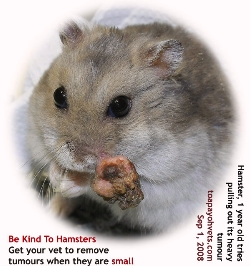 |
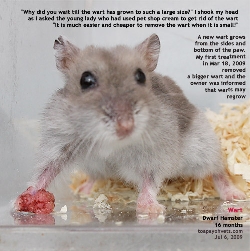 |
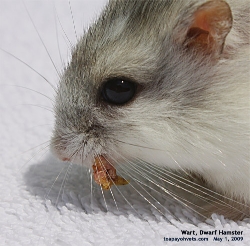 |
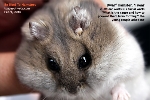 |
||||||||
| Blood just can't stop flowing |
|
The Wart Re-Appears in June 2009 | Wart Removal by electrosurgery | ||||||||
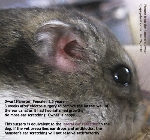 |
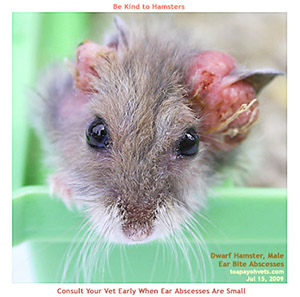 |
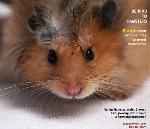 |
 |
||||||||
|
|
Ear abscesses are gigantic now and difficult to treat. Smaller abscesses are less expensive to treat. Consult your vet early | A large grey lump appears to grow fast above the right eye in this Syrian Hamster, Male, 2 years old. What is it? What is the cause? |
|
||||||||
|
MORE HAMSTER CASES AT: Click: Hamsters
Copyright ©
Asiahomes Internet |
|||||||||||
 TOA
PAYOH VETS
TOA
PAYOH VETS